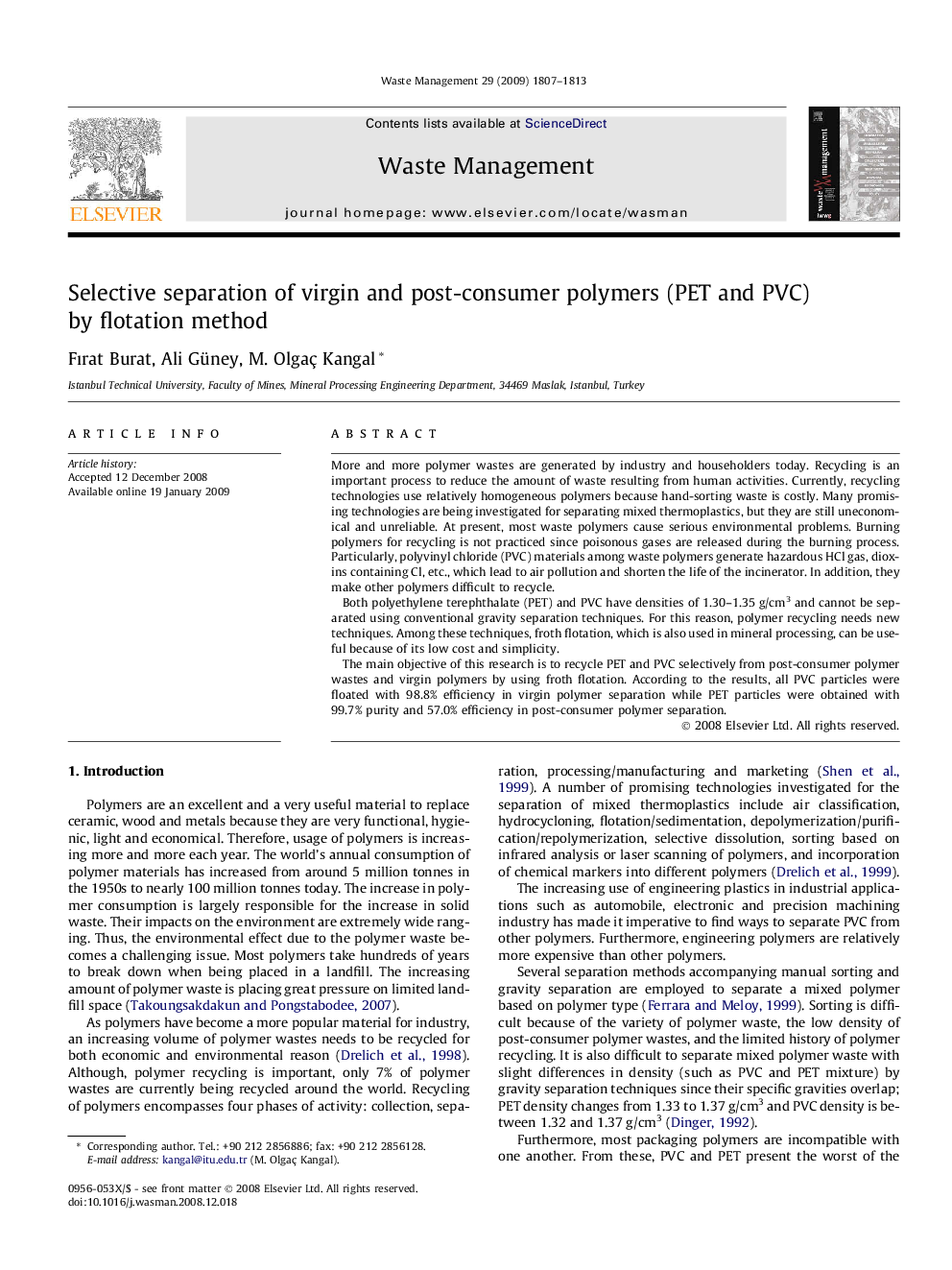| کد مقاله | کد نشریه | سال انتشار | مقاله انگلیسی | نسخه تمام متن |
|---|---|---|---|---|
| 4473319 | 1315093 | 2009 | 7 صفحه PDF | دانلود رایگان |

More and more polymer wastes are generated by industry and householders today. Recycling is an important process to reduce the amount of waste resulting from human activities. Currently, recycling technologies use relatively homogeneous polymers because hand-sorting waste is costly. Many promising technologies are being investigated for separating mixed thermoplastics, but they are still uneconomical and unreliable. At present, most waste polymers cause serious environmental problems. Burning polymers for recycling is not practiced since poisonous gases are released during the burning process. Particularly, polyvinyl chloride (PVC) materials among waste polymers generate hazardous HCl gas, dioxins containing Cl, etc., which lead to air pollution and shorten the life of the incinerator. In addition, they make other polymers difficult to recycle.Both polyethylene terephthalate (PET) and PVC have densities of 1.30–1.35 g/cm3 and cannot be separated using conventional gravity separation techniques. For this reason, polymer recycling needs new techniques. Among these techniques, froth flotation, which is also used in mineral processing, can be useful because of its low cost and simplicity.The main objective of this research is to recycle PET and PVC selectively from post-consumer polymer wastes and virgin polymers by using froth flotation. According to the results, all PVC particles were floated with 98.8% efficiency in virgin polymer separation while PET particles were obtained with 99.7% purity and 57.0% efficiency in post-consumer polymer separation.
Journal: Waste Management - Volume 29, Issue 6, June 2009, Pages 1807–1813